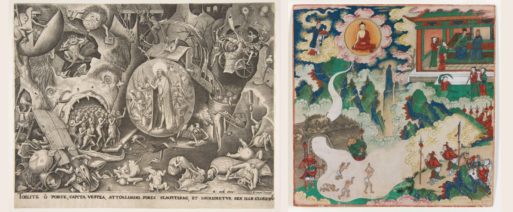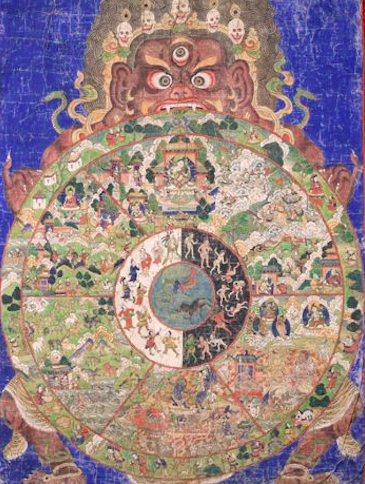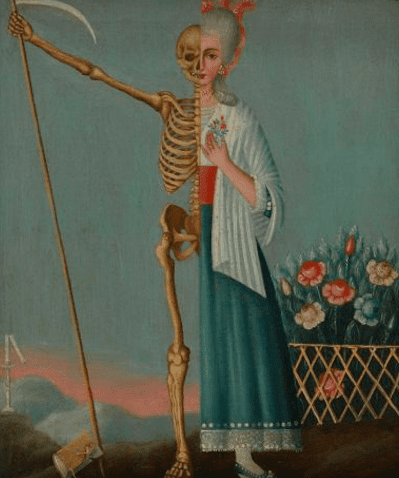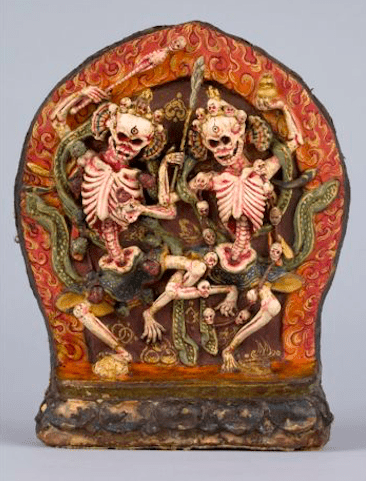
A comparison of ancient Christian and Tibetan Buddhist art around death.
Credit: The Rubin Museum
Rubin Museum curator Elena Pakhoutova has assembled an array of artwork to explore the concept of death in Tibetan Buddhism and Christianity. “Death is Not the End,” a cross-cultural exhibit, includes prints, oil paintings, bone ornaments, thangka paintings, sculptures, illuminated manuscripts and ritual items that span 12 centuries. Many of these are from the museum’s own collection, while others are on loan from different institutions.

A Tibetan Buddhist thangka painting of the wheel of life.
Credit: The Rubin Museum
“Death is Not the End” explores three central themes: 1) The Human Condition, or our shared understanding of our mortality; 2) States In-Between, such as limbo, purgatory, and the bardo; and 3) (After)life, which focuses on ideas of resurrection, transformation, and heaven.

An unknown artist’s painting of a half woman, half skeleton, c. 1790-1820.
Credit: The Rubin Museum
As Pakhoutova noted in an article on the exhibit, “the idea of resurrection comes up again and again, across time and cultures.” She hoped to emphasize this commonality by gathering 58 objects from both traditions. “My intention was to pair the most familiar cultural framework in the United States, Christianity, with a lesser known, Tibetan Buddhism, so that visitors could see the consistent inquiry of these themes across cultures and time periods,” Pakhoutova told Artnet News.

“Lords of the Charnal Ground,” from 18th-century Tibet.
Credit: The Rubin Museum
She went on to explain to Artnet News that viewers may experience a range of emotions. “The themes of the show, death and the afterlife, can be difficult to think about, emotionally as well as intellectually,” she said. “Among the emotions that I imagine visitors would feel could be grief, fear, uncertainty, surprise, curiosity.” However, she added that she hoped after viewing “Death is Not the End” they would “feel lighter, and hopeful when they leave, because so much of the show is also about life.”
“Death is Not the End” is on display at the Rubin Museum of Art, 150 W. 17th St., New York, through January 14, 2024.

 “Death Is Not the End” Looks at Death Through the Lens of Christian & Buddhist Art
“Death Is Not the End” Looks at Death Through the Lens of Christian & Buddhist Art


 First the Wealth Gap, Now the U.S. Has a Growing Health Gap
First the Wealth Gap, Now the U.S. Has a Growing Health Gap
 How to Comfort A Dying Loved One
How to Comfort A Dying Loved One
 Our Annual Seven Holiday Gifts for Someone Who Is Grieving, 2024 Edition
Our Annual Seven Holiday Gifts for Someone Who Is Grieving, 2024 Edition














